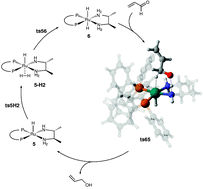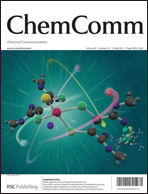Computational insights on the mechanism of the catalytic hydrogenation with BINAP–diamine–Ru complexes: the role of base and origin of selectivity†‡§
Abstract
In this work we show that a base is needed to generate the active catalyst through any of three different paths close in energy. The facial differentiation arises from steric interactions that induce a very asynchronous, non-pericyclic disfavored transition state. Catalyst regeneration takes place through two steps that avoid a forbidden pericyclic mechanism.

- This article is part of the themed collection: Emerging Investigators 2013

 Please wait while we load your content...
Please wait while we load your content...